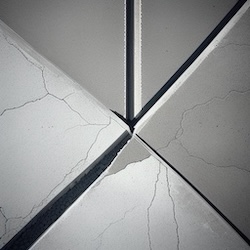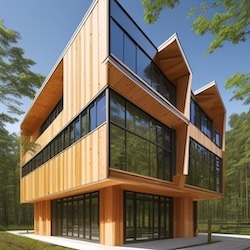
1. What if cracks in concrete could fix themselves? (206 words)
Biochemistry and Engineering get together to design a type of concrete that will allegedly last forever. Myth or scientific reality?
Concrete is the most widely used construction material in the world. It can be found in swathes of city pavements, bridges that span vast rivers, and the tallest skyscrapers on earth.
But this sturdy substance does have a weakness: it’s prone to catastrophic cracking that costs tens of billions of dollars to repair each year.
But what if we could avoid that problem, by creating concrete that heals itself? This idea isn’t as far-fetched as it may seem. It boils down to an understanding of how concrete forms, and how to exploit that process to our benefit.
Concrete is a combination of coarse stone and sand particles, called aggregates, that mix with cement, a powdered blend of clay and limestone. When water gets added to this mix, the cement forms a paste and coats the aggregates, quickly hardening through a chemical reaction called hydration.
Eventually, the resulting material grows strong enough to prop up buildings that climb hundreds of meters into the sky. While people have been using a variety of recipes to produce cement for over 4,000 years, concrete itself has a surprisingly short lifespan. After 20 to 30 years, natural processes like concrete shrinkage, excessive freezing and thawing, and heavy loads can trigger cracking.

2. Golden Gate Bridge | The CRAZY engineering behind it. (206 words)
How suspension bridges stay stable: forces, towers, and smart design.
Before exploring more about the Golden Gate Bridge, let's first understand why the engineers chose a suspension design for this site. The distance between the two coastlines of the Golden Gate is a whopping 2.7 kilometers.
This design has one glaring issue. If you construct the bridge like this, the towers will bend inward. The main cable is under a huge tensile load. This applies force on the tower. When you resolve this force, you can see that there is an imbalanced horizontal force acting inward on the tower, which explains why the towers bend.
To cancel this horizontal force, we need the same force acting in the opposite direction. The straightforward solution is to extend the main cable and anchor it down to the ground via an anchorage system.
However, we can optimize the financial resources needed to construct this bridge with a simple idea. All we need to do is move the towers closer to one another. Now, the length of the unsupported bridge deck is reduced.
Due to this, tension in the cable will be reduced. This will obviously lead to a cable with less cross-section area. The width of the main cables are more than half the height of the average human.

3. Why all buildings should be timber. (189 words)
How engineered timber transformed construction with speed, strength, and precision.
Preparing raw timber for construction used to be a time-consuming manual task, but today it’s mostly done by machines in automated factories.
Parts can be made quickly, in almost any size or shape, for any project. Large elements like walls, floors and even whole sections of a building can be made in factory-controlled conditions before being transported to site.
Once there, they’re assembled on pre-built concrete foundations. It’s quieter, faster and safer than other building techniques.
Modern wood types like cross-laminated timber - known as CLT - and laminated veneer lumber – or LVL - enable whole buildings to be made out of wood, from the structural beams to the walls. CLT panels are made by fixing several lumber boards together in alternating layers using super-strong adhesive and compression techniques. Doing this gives the material high strength in two directions, making it sturdy and versatile.
Another kind of engineered wood known as glue laminated timber or glulam is made using a similar method, except the layers all face the same way. Glulam is therefore ideal when strength is only required in one direction, like with a column or a beam.